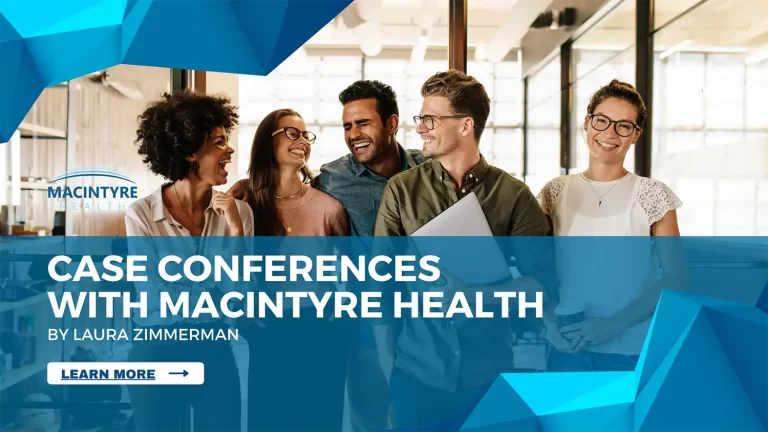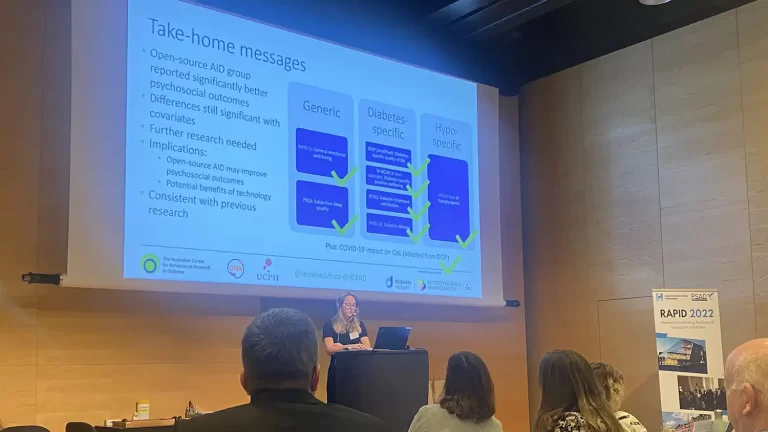Day 1
Well, I made it! I had submitted my abstract to IDF many months ago that was accepted as an oral presentation…so I have had it in my calender for quite some time that I would be attending this year’s IDF, the first face-to-face IDF since pre COVID19. So, it feels amazing to have made it to Lisbon, Portugal together with about 5000 delegates from across the globe to talk all things diabetes for 3 full days. The IDF programme is a busy one and there’s no way I am able to attend everything, but I still have access to recorded presentations on the app for a month following the end of IDF…so if there are any more golden nuggets as I listen to them, I will share with you all. For now though, live from IDF in Lisbon, here are my insights from the presentations I did attend…
Diabetes technology : Glycaemic metrics and outcomes
CGM in primary care networks
Prof Julia Mader
“This tool can do so much more than giving us individual values”
Rule of thumb for primary care staff to ask when assessing CGM data :
- Data quality
- Target range and Time In Range (TIR)
- Hypoglycaemia
- Glucose variability
- Stability of glucose profile
Diabetes Apps : A tool for building healthy habits?
Dr David Anh
Quote from diatribe : “Diabetes apps make mental burden less”
Hard to have a revenue model when providing long term support of apps
Very limited clinical studies for supporting apps – either underpowered or too short in duration; most that have been included in the literature are bolus calculator apps
Would apps be better supported with remote monitoring or coaching element?
Without bolus calculator apps people use round numbers; not everyone has 1:15 or 1:10 carb ratios but these ratios have made it easier for PwD and clinicians deal with the numbers
Maybe there is no golden diabetes app, maybe we need to meet PwD where there are!
Digital health and diabetes – access trust and self-efficacy
Dr David Kerr
Diabetes like COVID19 is a wicked problem, which have been around since 1960s, and which stems from social determinants of health
“The focus has been on biology of diabetes rather than being on the sociology of diabetes care”
Telehealth hasn’t minimised provider shortage or provider burn out and PwD are reverting back to face to face care with human beings because they want behavioural health care
Hispanics who have health insurance have HbA1C above 9%
Accessing the HbA1C test itself is influenced by race and ethnicity itself in USA
Whilst evidence for T1DM and tech is growing and TIR is the hottest topic we need to make CGM accessible to all
Abbott has provided Libre PRO to Hispanics at risk of diabetes which has shown that we can detect early signs of dysglyucaemia
Whilst the world is wrapped up by access to CGM for T1DM, we must remember that most of the world living with T2DM are still doing finger prick checks
If you want to keep offering clinic appts Monday-Friday 9am-5pm then diabetes care is doomed to fail !
Same for physical activity, if you tell people to join a gym, it won’t happen…so opt for prescribing physical therapy focusing on number of steps rather than being any more prescriptive than that
“We are not very good at communicating with people”
“Diabetes epidemic is falling on those who are experiencing disparities”
“Digital inclusion is a super social kind of social determinant of health”
Diabetes prevention and remission of diabetes
Implementing type 2 diabetes prevention and remission programmes at scale
Jonathan Valabhji
The NHS diabetes prevention programme
- Used HbA1C 6-6.5% or FBG of 5-5.9mmol
- Did not use the OGTT for diagnosis in this programme
- 9 month programme over 13 sessions to support people to change behaviour
- Then invited providers that could disseminate the programme
- Pilot study with 5 digital providers run to determine if rolling this out digitally was really the best thing to do : peer support was found to be important
- Remote delivery is via zoom/teams
- Digital delivery is via an individual product
The NHS type 2 diabetes path to remission
- Consumer focus groups helped to reword the title of this group removing the word ‘diet’ out of it
- 3 months of total meal replacements
- 10 days ago (prior to IDF) sent out invitation to tender for this programme
- Currently very focused on white culture, but will be focusing on multi-ethnicity in time to come
- Encouraging retention rates
Strategies on prevention – are they working?
Timotheus Doh
Asked audience why strategies are working…
- Those in favour said they are if the data is there
- Those not in favour said they aren’t because of how food and technology impact society
Person Reported Outcome Measures (PROMS) in diabetes care
PROMS in diabetes care : approaches in different countries, implementation challenges and successes
Reem Fahd al Bunyan, Massimo Massi-Benedetti, Bruce Hellman, Carlene Radix
Panels’ experiences with PROMS :
- To provide perspective of being leader of knowledge centre that provides information for policy making through a person-centred value based manner
- What is value and meaning of health? But how do we measure value and meaning? By looking at measurable outcomes like PROMS
- Capturing PROMS puts person at centre of their care to empower and enable them to lead their own healthcare, as well as guiding researchers and clinicians to change practice
- Important because we should always be acknowledging and understanding the person’s perspective
- Using PROMS has the ability to reduce the ‘prescriptiveness’ that health professionals often provide
- Registries à indicators à PROMS
What reflections do you have about how PROMS could be utilised in diabetes world?
- PROMS is the link between data and PwD
- Working with PwD who are used to data coming in is the advantage for incorporating PROMS into research; PROMS capture that rich subjective data that is often more burdensome than the data
- PwD can lose their identity…they become half doctors…so with PROMS we are looking at capturing what PwDs’ feelings behind the medical concepts and interventions
- “How do you draw a true picture of someone’s full health?”…by using PROMS
- “Diabetes is a disease of performance” says Cajsa Lindberg (PwT1D 20 years) because it’s a constant evaluation process
- Enabling the success of PROMS is about making ‘soft indicators’ into ‘hard indicators’ which will take a profound culture change
- “Remembering the WHY”







Day 2
DINAMO Study of adolescents
Prof Lori Laffel
Increase of youth T2DM is happening on the background of childhood obesity and overweight
Kidney disease, hyperlipidaemia and hypertension is exceeding >50%
There is most definitely a shortage in treatment for youth T2DM
Biggest challenge for youth T2DM research has been recruitment
DINAMO objective – to assess efficacy and safety of dosing empagliflozin and linagliptin
T2DM in youth tend to be incident rather than prevalent reported
Safety outcomes impressive up to both 26 weeks and 52 weeks of the DINAMO study
- No DKA
- Expected hypoglycaemia but manageable
- UTIs in context of Jardiance use
Prof Chantal says there is an overwhelming under representation of youth and elderly with T2DM in research studies
Prof Laffel acknowledges it’s important to conduct lived experienced studies in parallel
Diabetes and preventing malformations
Contraception for women with diabetes
Usha Sriram
Unattended pregnancy equals unplanned pregnancy
“Pregnancy complicates diabetes…not the other way around”
Are women with pre-existing diabetes more active with contraception?
Who is best to provide contraception advice and treatment?
Teens with pre-existing diabetes more likely to seek contraception if previous anomalies, have family support, are educated
“Preconception planning – the relationship is the thing”
- These women all had an optimal relationship with their healthcare provider and partners
BUT how do we get this awareness to women and partners and communities at the right time before it’s too late???
- In Bangladesh they have a QR code project where wherever couples purchase something they get information about family planning pop up
- In Pakistan ‘family planning’ is taboo topic so they have had to change the wording
Why and how do malformations occur?
Mary Loeken
Why do embryos express GLUT2?
- GLUT2 is essential to increase sensitivity of maternal glycaemia
- GLUT2 is important for foetal protection even during normoglycaemia
- Can elevate glucosamine but cannot reduce it but can use stem cell transplantation approach
Health system responses to innovation and technologies – the push for regulation and accessibility
Partha, Manny and Tim
Clinicians can be the barrier to diabetes tech accessibility if they don’t update clinical skills
So, lack of accessibility is not just government and policy making barrier
An example is in primary care, GPs are resistive to prescribing insulin when it’s the next right thing to do – why?
Summarising accessibility :
- As policy maker it’s your role to make things available, but data is required to prove what is needed
- Cannot tackle acceptability if you don’t deal with politics
Big problem with regulation :
- Approach to how regulation is done is inconsistent
- “How about you ask me, the PwD, about how much risk I am willing to take without having access to diabetes tech?” is not being asked of community by policy makers
Summary of regulation :
- There needs to be a standard framework for all stakeholders across the globe that policy makers and government must uphold







Day 3
IDF Diabetes Atlas, 10th Edition Highlights
Prof Dianna Magliano
Diabetes Atlas has been around since 2000
Covers national and regional aspects
Covers T1DM, Children with Diabetes, Incidence, Mortality and Expenditure
2021 focused on T2DM in kids and T1DM in adults during COVID19
“We are on the verge of 1 trillion dollars spent on diabetes”
Diabetes is decreasing in Portugal but population is dropping by 0.29% (mostly triggered by migration)
“There is a dearth of data from Africa – need much more work there”
Every country is represented in stats but territories less than 50,000 don’t have prevalence estimated
COVID19 has been found to be a risk factor of disease severity in PwD
Diabetes related health expenditures
Prof William Hermann
Huge disparities in diabetes expenditure across the globe
Whilst diabetes will increase by 46%, diabetes expenditure will increase by only 9% in next 10 years due to …
- Most increase is in low to middle income countries
- Constant age and sex specific diabetes prevalence
T1D Index
Graham Ogle
12% increase in Maldives
Prevalence and incidence changing very rapidly in Mali
Big jump in percent between 2013-2014 in Mali due to poster awareness campaign
Median age of people diagnosed T1 is 29 years
Median age of those living with T1 is 39 years
“So yes, T1 is a childhood disease but it’s also a disease of adulthood”
‘T1D index’ available on mobile, on the website and in The Lancet
We need more data on incidence and prevalence – need multi-pronged approach to collaborating to find this data : advocacy, campaign, registries
The biggest obstacle to change is breaking through the barriers
Social perceptions creating barriers to change
Jazz Sethi, The Diabesties Foundation
“You don’t just HAVE type 1 diabetes”
Diabetes is not a noun because you don’t just have it, you live with it
You don’t live in a bubble with it, you have to live in society with it
But with that a lot of noise comes with society – the negative and positive
Stigma is not tanglible – it’s in the mind
Having health care allies to come together with PwD to work towards the systemic change that is needed
Brasil has recently released #LanguageMatters – Mark Barone encourages all countries to get on board of this
Economic challenges – the biggest obstacle in diabetes care : the sub-saharan Africa exerpience
Edith Mukantwari
Traditional healers are troublesome because they are being called on to ‘cure’ diabetes when the only cure is insulin so people are not surviving
Peer support comes into play for sub-saharan Africans because there is no mental health support for PwD
Sub-subharan Africa thinking about getting churches involved
They need more research and investment
They need more leadership in NCDs and diabetes
“We need an all-society approach – PwD need to be included”
Every level involved needs to be invested in
Envisioning the future of diabetes management
The future of diabetes, what’s next?
Prof Hindrik Mulder, Lund University
Precision medicine – does it now require new classification of diabetes?
All incident cases of diabetes has 6 variables – GADA, Age, HbA1C, BMI, HOMA2-B and HOMA2-IR
Proposed reclassification for diabetes types :
- MARD – mild age related diabetes
- MOD – mild obesity related diabetes
- SIRD – severe insulin resistant diabetes
- SIDD – severe insulin deficient diabetes
- SAID – severe autoimmune diabetes
But this reclassification system will perpetuate the existing diabetes stigma; any reclassification attempt must involve clinicians, researchers, scientists, health psychologists, policy makers and the diabetes community
Can we achieve a sweet life in diabetes?
Prof Joao Filipe Raposo
Is there a difference between what is triggering the high mental health burden for T2DM vs T1DM? Is it not the same? I would challenge that it’s an individual’s social determinants of health that triggers experiences of mental health burden rather than just the features of diabetes as a disease itself
NAFLD as a cause and complication of diabetes
Prof Norbert Stefan
We need to define T2DM differently not by focusing on glycaemia
We need to include a focus on metabolic aspects when defining T2DM
Risks for years of lost life (YLL) related to :
- Hypertension
- Elevated BMI
- Elevated FBG
Nothing About Us Without Us
Award Lecture – Living with Diabetes stream
Renza Scibilia
“Nihil de nobis, sine nobis”
“Renza reminds her 18 year old daughter that you do not need to know what you want to do with your life when you finish year 12; I was a classically trained flute player; I am now a health advocate…9002 days since her T1DM diagnosis”
“When we hear PwD and centre them in everything we do, it becomes more useful when we approach everything that we must do”
“Our (lived) expertise, whilst different to our healthcare professionals and researchers, is most certainly equal”
“By the community, for the community”…just like ‘Spare a Rose’ developed by USA advocates to support those without access to insulin
“There better be people with diabetes in the room” says past Diabetes Australia CEO Greg Johnson
We all must get better at :
- Including mental health in diabetes care
- Including person at start of discussions when formulating research
And that’s a wrap for #IDF2022 ! Rightly so, ending on the lived experience award lecture from Diabetes Australia’s Renza Scibilia, manager of type 1 communities, person who lives with type 1 diabetes and diabetes advocate! There was quite a dynamic lived experience stream throughout the entire IDF Congress planned, chaired and delivered by people with diabetes from across the globe. I didn’t go to many of these as I wanted to attend the sessions where there was little to no lived experience voice, input, or insight…so I could bring the message to these sessions that lived experience is essential at all sessions at all conferences. Whilst the lived experience stream at IDF was emotive and powerful, those participating in this stream are still not reaching many clinicians, researchers, and policy makers. To ensure lived experiences are heard far and wide, I strongly believe that the lived experience ‘stream’ be embedded into the more medical, clinical and research sessions. For example, I think for lived experience voices to have maximum impact every session at all diabetes conferences should include 1 clinician, 1 researcher and 1 person with diabetes at all sessions, at least…something to strive for in the near future! So, to conclude my conference experiences here in Europe over the past fortnight, I can guarantee that the most influential thing I am bringing back to Australia are the human connections I have made at both conferences…connections with like minded souls that will continue to collaborate to on innovative diabetes projects for many years to come so we can ensure people impact by diabetes live the best lives they can 😊



